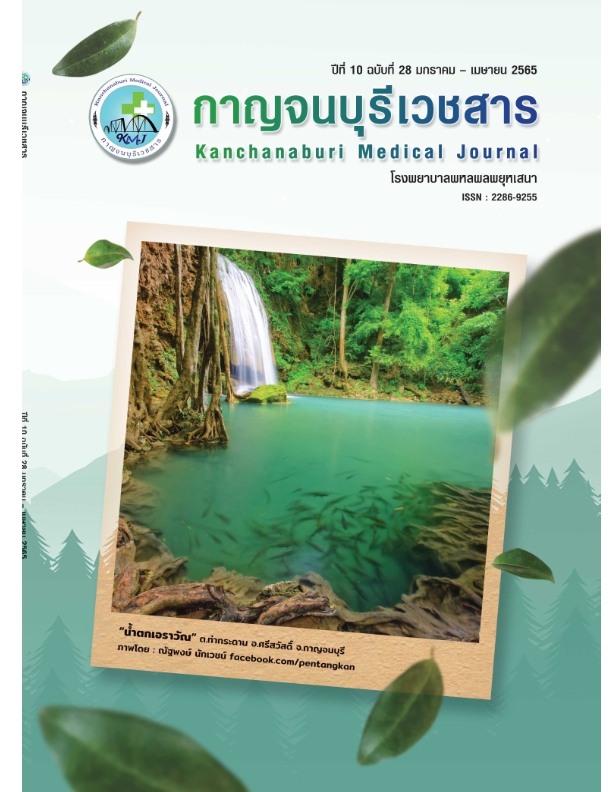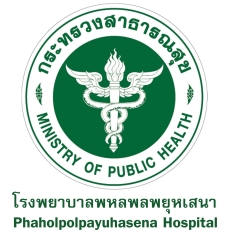ผลจากการใช้เครื่องมือในการคำนวณความน่าจะเป็นของการเกิดภาวะติดเชื้อในกระแสเลือดระยะแรกในทารกแรกเกิด (Neonatal early onset sepsis calculator) ต่อการใช้ยาปฏิชีวนะ ในโรงพยาบาลพหลพลพยุหเสนา
บทคัดย่อ
ภาวะติดเชื้อในกระแสเลือด (Neonatal sepsis) เป็นสาเหตุการตายที่สำคัญของทารกในประเทศไทย และแนวทางการดูแลรักษาทารกที่สงสัยภาวะติดเชื้อในกระแสเลือดตอนต้น (early onset neonatal) ที่ใช้ในปัจจุบันทำให้ทารกกลุ่มที่ไม่ติดเชื้อหลายคนต้องได้รับการรักษา จึงได้มีการพัฒนาเครื่องมือที่ทำให้การวินิจฉัยแม่นยำมากขึ้นมาใช้ในทารกแรกเกิดที่อายุครรภ์ตั้งแต่ 34 สัปดาห์ขึ้นไป (Neonatal early onset sepsis calculator) เพื่อให้ทารกกลุ่มที่ไม่ติดเชื้อไม่ต้องได้รับการรักษา
วัตถุประสงค์ เพื่อศึกษาว่าการใช้ Neonatal early onset sepsis calculator ประเมินความเสี่ยงในการเกิดภาวะติดเชื้อในกระแสะเลือดของทารกแรกเกิดอายุครรภ์ตั้งแต่ 34 สัปดาห์ขึ้นไปจะสามารถลดการใช้ยาปฏิชีวนะลงได้เมื่อเปรียบเทียบกับ CDC recommendation ที่ใช้อยู่ในปัจจุบัน
วิธีการศึกษา ศึกษาแบบย้อนหลังในทารกแรกเกิดอายุครรภ์ตั้งแต่ 34 สัปดาห์ขึ้นไปทุกราย ที่เกิด ตั้งแต่วันที่ 1 มกราคม 2562 - 31 มกราคม 2562 ในโรงพยาบาลพหลพลพยุหเสนา ได้รับการวินิจฉัยว่าเป็น Neonatal sepsis, Risk for neonatal sepsis, presumed neonatal sepsis และได้รับยาปฏิชีวนะภายใน 72 ชั่วโมงหลังเกิดเปรียบเทียบอัตราการใช้ยาปฏิชีวนะและการตรวจเพาะเชื้อในเลือด ระหว่างแนวทางการรักษาของ CDC กับ Neonatal early onset sepsis calculatorโดยใช้ McNemar’ s test กำหนดค่านัยสำคัญทางสถิติคือ P < 0.05
ผลการศึกษา ทารกจำนวน 198 คน ส่วนใหญ่เป็นทารกคลอดครบกำหนด มีค่ามัธยฐานน้ำหนักแรกเกิด 2802กรัม ทารก 171 คน ร้อยละ 86.4 ได้รับยาปฏิชีวนะมากกว่า 5 วัน ค่ามัธยฐานของจำนวนวันที่ทารกได้รับยาปฏิชีวนะคือ 7 วัน เพาะเชื้อขึ้นในเลือด (Positive blood culture) 9 คน คิดเป็นร้อยละ 4.5
Neonatal early onset sepsis calculator แนะนำให้ตรวจเพาะเชื้อในเลือด ร้อยละ 55 ให้ยาปฏิชีวนะ ร้อยละ 47 เปรียบเทียบกับ CDC guideline คือ ร้อยละ 90.9 และ 85.4 ตามลำดับ ซึ่งลดลงอย่างมีนัยสำคัญทางสถิติ (P< 0.0001, odd ratio 0.013 95% CI 0-0.075)
สรุป การใช้ Neonatal early onset sepsis calculator อาจจะช่วยลดจำนวนทารกที่ต้องได้รับการตรวจเพิ่มเติมและการให้ยาปฏิชีวนะได้ เพื่อป้องกันไม่ให้เกิดผลข้างเคียงจากการที่ทารกได้รับยาปฏิชีวนะ ลดวันนอนโรงพยาบาล ลดค่าใช้จ่ายของโรงพยาบาล ลดความเครียดของพ่อแม่ที่เกิดจากการที่ลูกต้องนอนโรงพยาบาลนาน
เอกสารอ้างอิง
UNICEF Data: Neonatal mortality. URL: https://data.unicef.org/topic/child-survival/neonatal-mortality/Accessed on May 21, 2018.
Polin RA. The committee on Fetus and Newborn. Management of neonates with suspected or proven early onset bacterial sepsis. Pediatrics 2012;129:1006-1015.
Verani JR, McGee L schrag SJ. Prevention of perinatal group b streptococcal disease: revised guidelines from CDC 2010. MMWR Recomm Rep 2010;59(RR-10):1-36
Mukhopadhyay S, Eichenwald EC, Puopolo KM. Neonatal early-onset sepsis evaluations among well-appearing infants: projected impact of changes in CDC GBS guidelines. J Perinatol 2013;33(3):198-205.
Mukhopadhyay S, Dukhovny D, MaoW, Eichenwald EC, Puopolo KM. 2010 perinatal GBS prevention guideline and resource utilization. Pediatrics. 2014;133(2):196-203.
Benjamin DK, Delong ER, Steinbach WJ, Cotton CM, Walsh TJ, Clark RH. Empirical therapy for neonatal candidemia in very low birth weight infants. Pediatrics 2003;112:543-547.
Cotton CM, Taylor S, Stoll B, Goldberg RN, Hansen NI, Sanchez PJ et al. Prolonged duration of initial empirical antibiotic treatment is associated with increased rates of necrotizing enterocolitis and death for extremely low birth weight infants. Pediatrics 2009;123(1):58–66.
Dhudasia MB, Mukhopadhyay S, Puopolo KM. Implementation of the sepsis risk calculator at an academic birth hospital. Hosp Pediatrics. 2018;8(5):243-250.
Mitre E, Susi A, Kropp LE, Schwartz DJ, Gorman GH, Nylund CM. Association between use of acid-suppressive medications and antibiotics during infancy and allergic diseases in early childhood. JAMA Pediatrics. 2018;172(6):180-315.
Kuzniewicz MW, Walsh EM, Li S, Fischer A, Escobar GJ. Development and implementation of an early-onset sepsis calculator to guide antibiotic management in late preterm and term neonates. Jt Comm J Qual Patient Saf. 2016;42(5):232-239.
Puopolo KM, Draper D, Wi S, et al. Estimating the probability of neonatal early-onset infection on the basis of maternal risk factors. Pediatrics. 2011;128(5):1155-1163.
Kuzniewicz MW, Puopolo KM, Fischer A, Walsh EM, Li S, Newman TB, Kipnis P, EscobarGJ: A quantitative, risk-based approach to the management of neonatal early-onset sepsis. JAMA Pediatrics 2017;171:365–371.
Warren S, Garcia M, Hankins C: Impact of neonatal sepsis calculator on antibiotic use within two tertiary healthcare centers. J Perinatol. 2016;00:1-4.
Strunk T, Buchiboyina A, Sharp M, Nathan E, Doherty D, Patole S: Implementation of the neonatal sepsis calculator in an Australian tertiary perinatal center. Neonatology 2018;113:379-382
ดาวน์โหลด
เผยแพร่แล้ว
รูปแบบการอ้างอิง
ฉบับ
ประเภทบทความ
สัญญาอนุญาต
ลิขสิทธิ์ (c) 2022 โรงพยาบาลพหลพลพยุหเสนา

อนุญาตภายใต้เงื่อนไข Creative Commons Attribution-NonCommercial-NoDerivatives 4.0 International License.
บทความที่ได้รับการตีพิมพ์เป็นลิขสิทธิ์ของโรงพยาบาลพหลพลพยุหเสนา
ข้อความที่ปรากฏในบทความแต่ละเรื่องในวารสารวิชาการเล่มนี้เป็นความคิดเห็นส่วนตัวของผู้เขียนแต่ละท่านไม่เกี่ยวข้องกับโรงพยาบาลพหลพลพยุหเสนาและบุคลากรท่านอื่น ๆ ในโรงพยาบาลฯ แต่อย่างใด ความรับผิดชอบองค์ประกอบทั้งหมดของบทความแต่ละเรื่องเป็นของผู้เขียนแต่ละท่าน หากมีความผิดพลาดใด ๆ ผู้เขียนแต่ละท่านจะรับผิดชอบบทความของตนเอง





